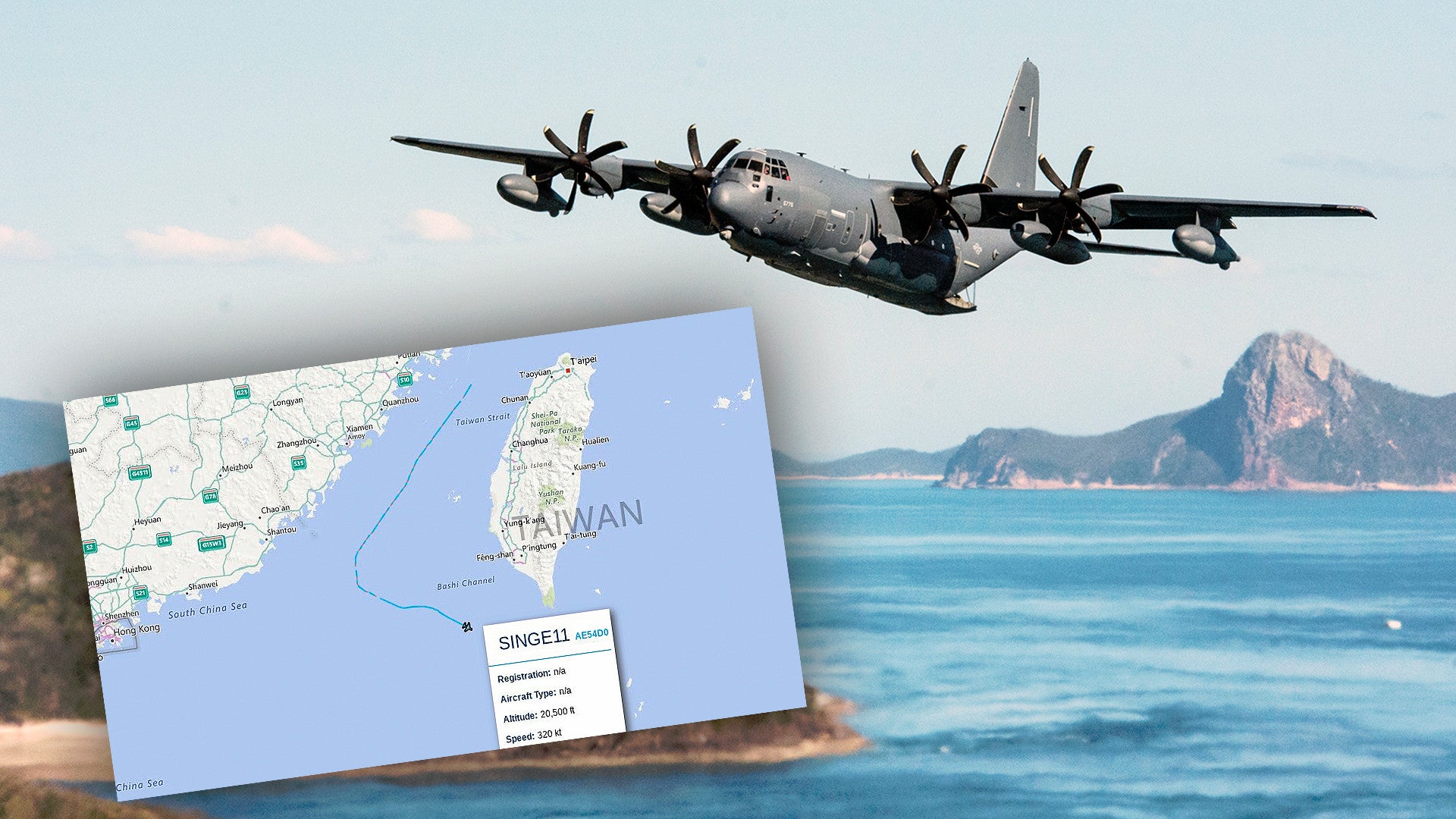A U.S. Air Force MC-130J Commando II special operations transport made a rare trip through the highly sensitive Taiwan Strait today, flying along the so-called “Median Line” that serves as the de facto boundary between Taiwan and mainland China. There was a variety of other interesting military aerial activity in the area around the same time, including an RC-135W Rivet Joint spy plane flying what appeared to be an intelligence-gathering operation just to the south and still unidentified aircraft flying an orbit within the Strait itself. It also came at a time when tensions between the U.S. and Chinese governments, as well as those between authorities in Tapei and Beijing, have flared over a host of issues, including Taiwanese plans to purchase advanced American Block 70 F-16 Viper fighter jets, ongoing protests in Hong Kong, and U.S.-China trade disputes.
The MC-130J, serial number 12-5763, was one of those assigned to the 17th Special Operations Squadron, part of the 353rd Special Operations Group at Kadena Air Base in Japan. The aircraft, using the call sign Singe 11, left Kadena on Aug. 29, 2019, and was visible using online flight tracking software as it passed north to south through the Taiwan Strait. It then turned southeast into the Bashi Channel, which sites between Taiwan and the Philippines.
It’s not entirely clear what the aircraft’s ostensible mission might have been. The skies above the median line are technically in international airspace. For their part, Taiwanese authorities said that there was “nothing abnormal” about the MC-130J’s actions within the Strait.
The U.S. Navy often conducts Freedom of Navigation patrols, or FONOPs, through the Strait to assert its right to sail unimpeded through international waters and to demonstrate the U.S. government’s ongoing commitment to Taiwan. Just on Aug. 23, 2019, the San Antonio class amphibious ship USS Green Bay
sailed through, the latest in a number of such transits by American naval vessels this year.
In 1979, The United States recognized China’s communist government as the sole legitimate government in the country. At the same time, Congress passed a law stipulating that the U.S. government would continue to reserve the right to sell arms to Taiwan, and otherwise cooperate with authorities there, until such time as the island’s final status was resolved. China views the island as a rogue semi-autonomous region and has repeatedly threatened a military intervention if officials there attempt to declare full independence.
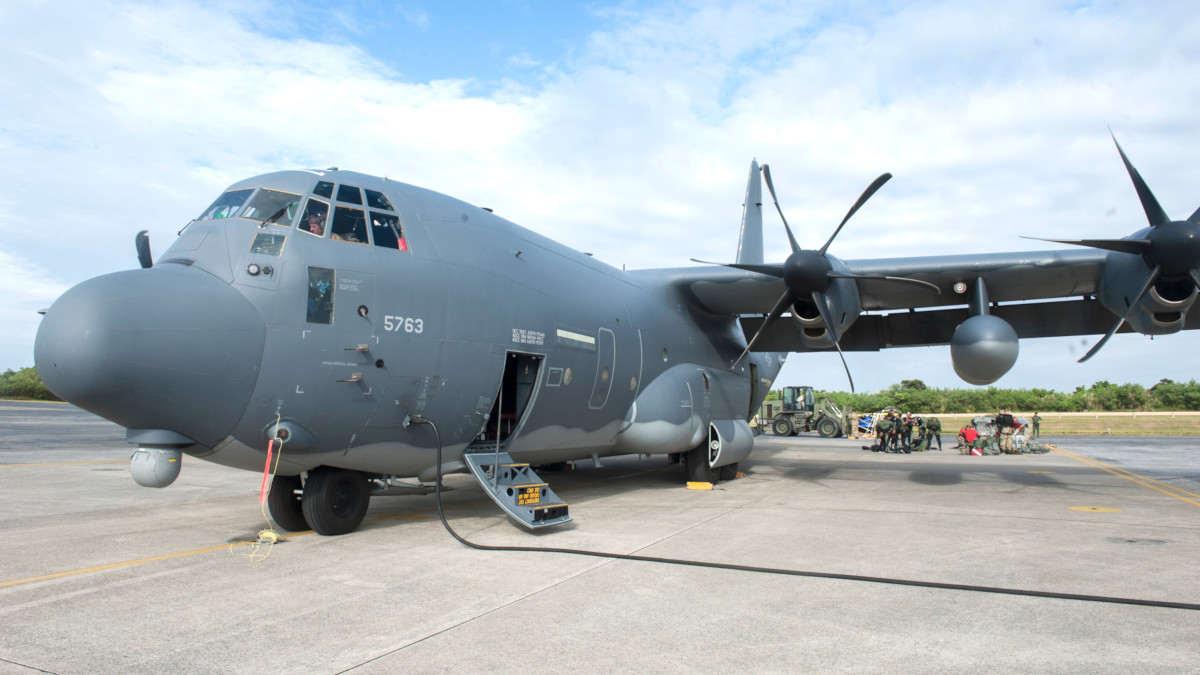
Naval FONOPs are not uncommon in the region, but similar aerial activity is much rarer. In June 2019, a U.S. Navy P-8A Poseidon maritime patrol aircraft, which also has significant electronic intelligence-gathering capabilities, flew through the Strait at the same time the Chinese aircraft Liaoning was sailing below. In another instance in 2011, Chinese fighter jet scrambled to try to intercept an Air Force U-2S Dragon Lady spy plane as it flew between Taiwan and the Mainland.
The U.S. military far more regularly uses aircraft, as well as ships, to challenge Chinese claims in the South China Sea and other outlying areas. Conducting this kind of sortie in the Taiwan Strait, which by definition places the plane relatively close to the Chinese mainland, could be considered more provocative than these other flights that are largely over the open ocean.
It’s hard to say whether or not the sole purpose of the flight was a FONOP, either. The MC-130J may have been slated to head south from Japan for another reason, possibly to take part in exercises in and around the Philippines. Mission planners could have then decided to combine that transit with a flight through the Taiwan Strait.
Official pictures show that Air Force CV-22 Osprey tilt-rotors from the 21st Special Operations Squadron were training together with the Nimitz class carrier USS Ronald Reagan and her associated strike group, in the Philippine Sea last week. The 21st is another unit assigned to the 353rd in Japan, but which is based at Yokota Air Base. MC-130Js also act as special operations tankers for the CV-22s, as well as special operations helicopters, and could have been working together with these assets as part of ongoing exercises.
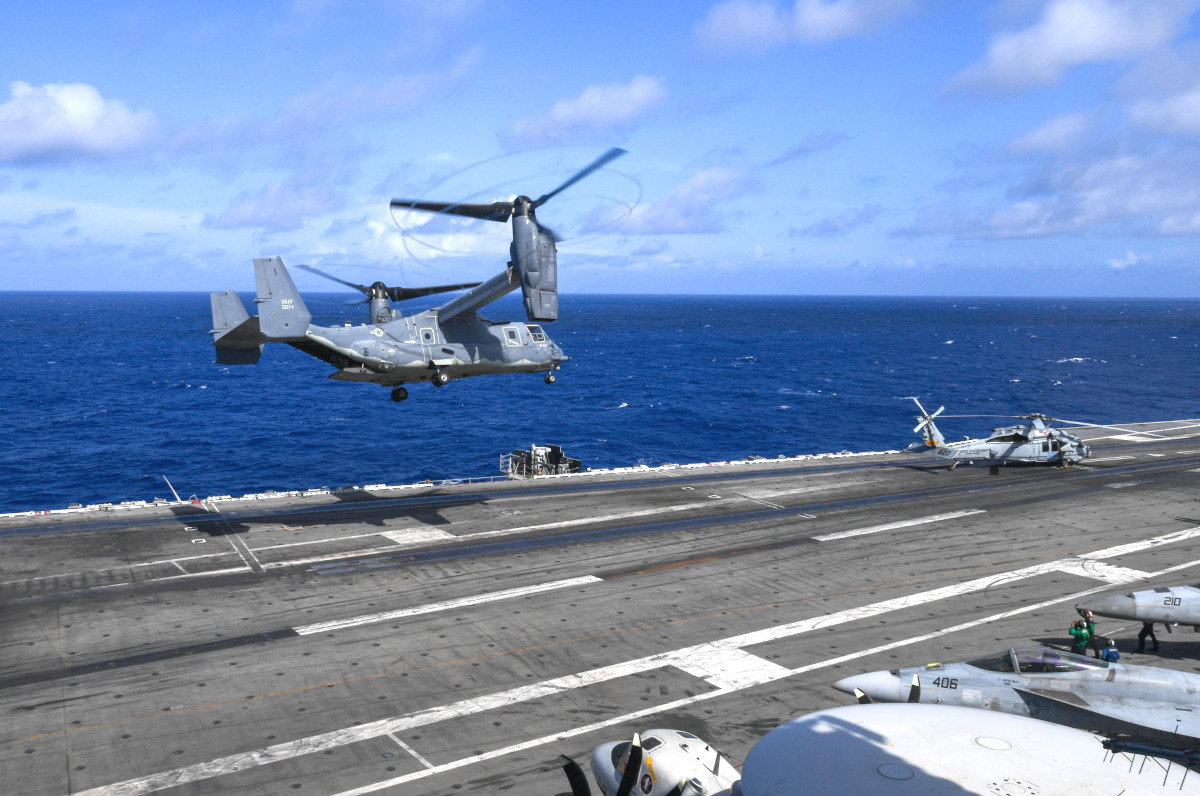
It’s also interesting to note that an Air Force RC-135W Rivet Joint spy plane, using the call sign Ronin 71, was flying an orbit in the Bashi Channel at the same time the MC-130J was passing through the Strait. Rivet Joints are among the service’s most capable intelligence collection platforms and have powerful equipment to spot, geo-locate, and categorize various emitters, including communications nodes and air defense radars.
It is quite possible, in not probable, that Ronin 71 was monitoring how China’s air defense network responded to Singe 11 flying through the area. Communications chatter could offer useful information about Chinese standard operating procedures. The aircraft would also have been able to gather information on the locations and types of radars and other emitters associated with the country’s air defenses, which could help in the creation of an up-to-date “Electronic Order of Battle” for the Peoples Liberation Army’s assets in the region.
Of course, the RC-135W flight may well have been pre-planned separately, as well, despite the fact that it likely had a chance to gather especially valuable information given the presence of the MC-130J. It may have also been related to a separate B-52 bomber flight in the South China Sea. Just the day before the MC-130J flight through the Taiwan Strait and the B-52 mission, the Arleigh Burke class destroyer USS Wayne E. Meyer
conducted another FONOP past Fiery Cross and Mischief Reefs, also in the South China Sea, which China claims as its national territory, which may have also stirred up Chinese activity worth snooping on.
Regardless, Rivet Joint flights occur with some regularity across the Western Pacific and the Air Force has applied a number of nicknames to routine missions in established operating areas in the region in the past. These have included Diamond Wind sorties in the East China Sea, Misty Wind flights in and around the Philippines, Sapphire Wind patrols in the South China Sea, and Opal Wind missions in a broader generalized area southeast of Okinawa, which would primarily consist of the Philippine Sea.
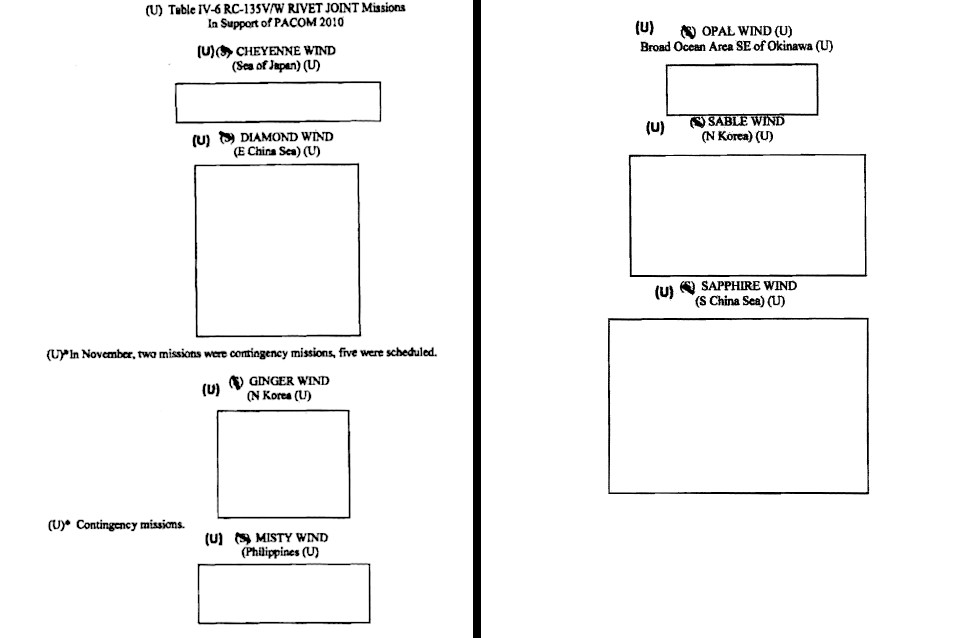
Friend of The War Zone
@AircraftSpots also noticed a curious unidentified aircraft flying a pattern inside the Taiwan Strait after the MC-130J left. Here’s what they could share with us about this mysterious track:
“Shortly after the MC-130J left, an aircraft using a miscoded hex code of 000001 began flying a race track pattern over the Taiwan Strait and after roughly 25 minutes in the pattern, the aircraft continued northbound through the Strait. I was unable to find the identity of the aircraft.”
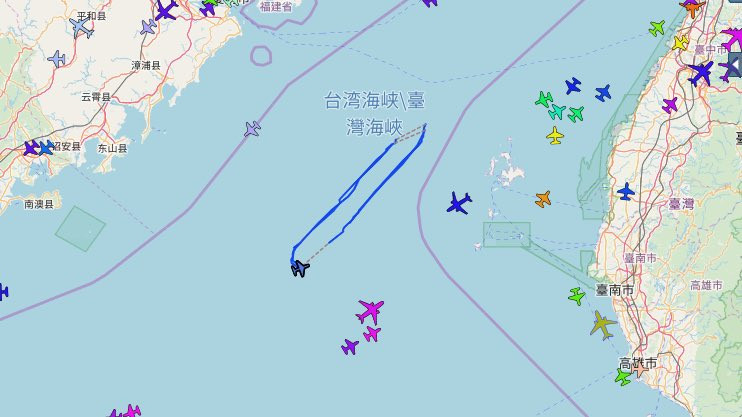
Whatever the exact reasons for the MC-130J’s trip, as well as the activities of the mystery aircraft and the RC-135W, the flights in the Taiwan Strait are unusual and almost guaranteed to draw a rebuke from China. The sorties come as relations between Washington and Beijing are increasingly strained.
On Aug. 20, 2019, the U.S. government formally approved a long-reported proposed sale of advanced Block 70 F-16 Viper fighter jets sale to Taiwan, something the Chinese government has historically said would cross a major “red line.” China subsequently threatened to impose sanctions on any companies involved in the sale.
The month had also begun with a still very nebulous collision between a Taiwanese cargo ship Yutai Number One and an unknown Chinese warship. Taiwan’s Coast Guard subsequently denied reports that parts of a radar from the People’s Liberation Army Navy ship had fallen onto the deck of the Yutai Number One during the accident. There have been few other updates about the incident.
American, as well as Taiwanese, support for protesters in Hong Kong who have been calling for greater freedoms for months has also enraged Chinese authorities. On Aug. 29, 2019, China announced it was conducting what it claimed was a routine rotation of troops in and out of People’s Liberation Army garrison in that semi-autonomous region. This seemed to be a clear attempt to intimidate demonstrators and followed a highly publicized mass mobilization of paramilitary People’s Armed Police in the neighboring Shenzhen region earlier in the month, ostensibly for an exercise.

China had also blocked a planned port visit by two U.S. Navy ships to Hong Kong on Aug. 13, 2019. Another American warship found itself denied entry to the port of Qingdao in northeastern China just this week due to escalation tensions.
All of this is against the backdrop of an ongoing U.S.-China trade war, which has recently seen President Donald Trump approve more tariffs on Chinese goods and call for all American countries to stop doing business in China completely.
If relations between the United States and China continue to degrade, which looks very likely, at least in the near term, one has to wonder whether we may see U.S. military aircraft conduct increasing sorties through the Taiwan Strait to complement the existing naval activity in the region. If that happens, it could lead to escalating Chinese responses, as well.
Contact the author: joe@thedrive.com
